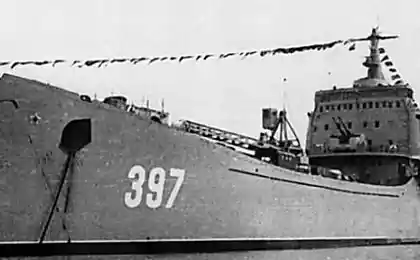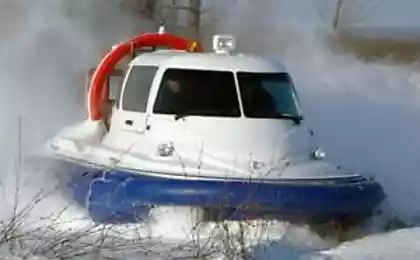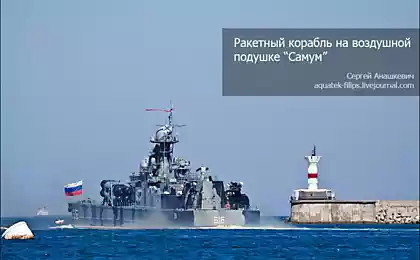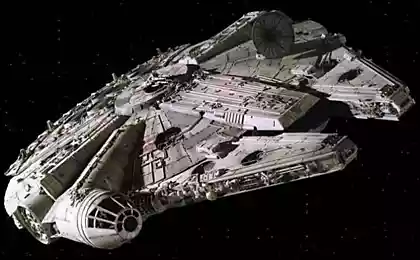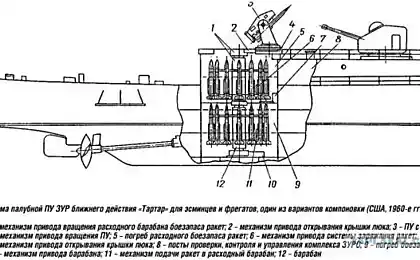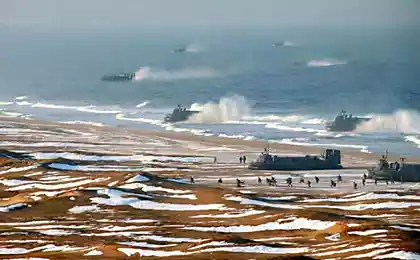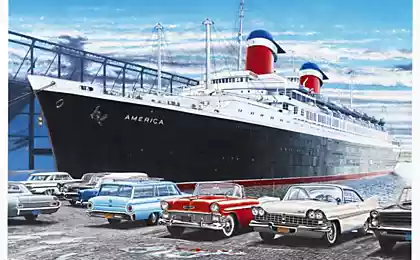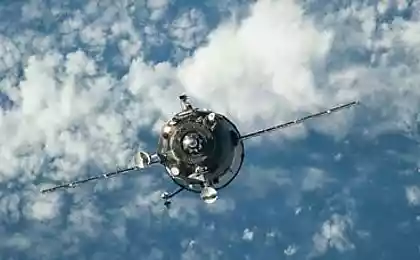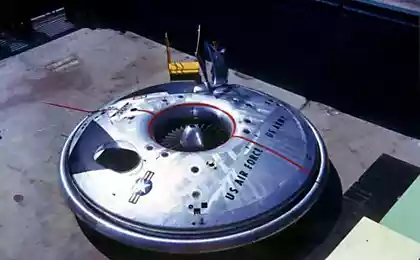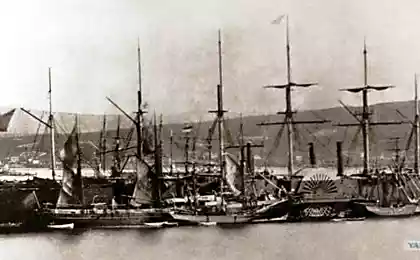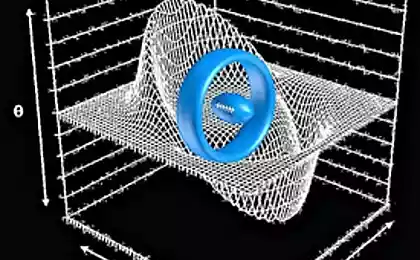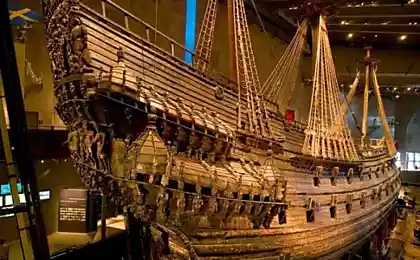1718
ZUBR-largest hovercraft.
Despite the presence of the word "small" in the designation of the classification of the project 12322 (MDKVP), "Bison" is the largest in the world among his own kind - amphibious hovercraft.
Even in the displacement mode, it looks very unusual due to the most conspicuous parts - driving screws 5-meter diameter, towering over the stern. Two towers with a quick-firing gun AK-630 as the cherry on the cake, give the ship finished and slightly menacing.
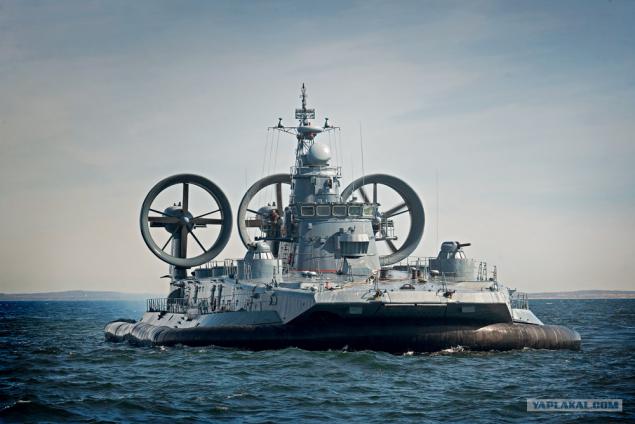
In the water coat
Huddled in a corner wheelhouse (so not to disturb anyone), I watch the preparations to sail. Posts are reporting readiness, and then, finally, gave the command to start engines, releasing a herd of 50 000 horses. In the armored pilothouse considerably muted roar of the engines, and I can only imagine how this incredible sound is perceived from the outside. At the same time, I understand that a fast ride will not work: while driving the output to the deck denied because the engine when working person can simply blow away.
"Rise!" - Commander, personally sitting at the controls, throws one of the toggle switches on the console. For each board has two of forcing the unit, the air intakes are closed top rotary blades. Flip the toggle switch turns the blades and blowers start supplying air into the pillow. Around "Mordovia" soars dust ship shaking trembling, rises above the surface. Turn the steering wheel from side to side, Sergei Konov swings heavy duty "Bison", slowly slipping on the concrete ramp into the water. When the ship is fully on the water, from the wheelhouse offers an amazing sight - around, wherever you look, sparkle plenty of rainbows - it's light is refracted at the water cloud of dust raised by an air bag. At full speed (60 knots and it is!) The ship is almost not visible - from the cloud mist protrudes only bow and glazed cabin. What, according to the officers, and still serves as a masking factor: mist interferes enemy radar signals, making it difficult to detect and target designation. Housing made of aluminum-magnesium alloy nonmagnetic, and taking into account the height of the flight (about half) "Bison" fears neither magnetic nor contact mines. The ship is equipped with five gas turbine engines - the two lower, each of which results in two injection unit (pobortno), and the top three - traction, rotate 5, 5-meter variable pitch screws in the annular orifice.
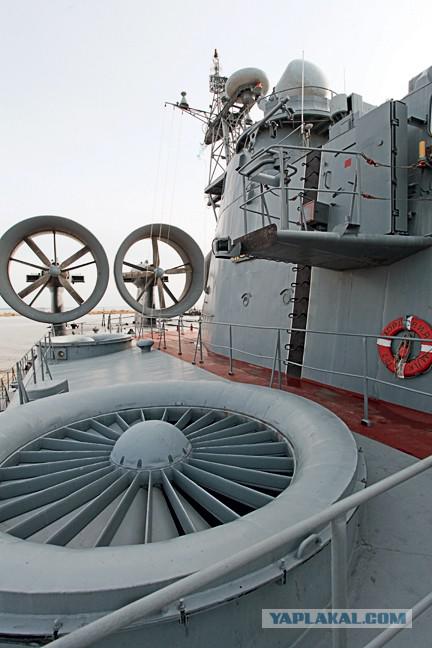
The most formidable weapon "Bison" - a two launchers for 140-mm unguided rockets.
Use such systems for fire support of landing. But in its stroke ship you will not see them. The fact that they are made drawers and put forward only to run Nursi, and after firing again fall under the deck.
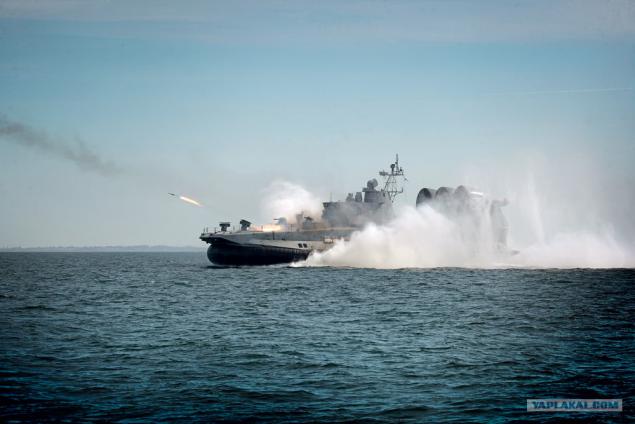
The commander and the steering
Hovercraft - the only ones where the commander is not simply orders the helmsman, and the person is at the helm. Displacement vessels and ships, deep-set in the water, much more inertia and predictable. "Bison" is hovering over the water, not touching her, and reacts to the wind literally: "The main problem, difficult control hovercraft - is its windage - explains Sergey Konov. - The area of the lateral projection - more than 500 square meters, so even moderate breeze makes its corrections, not to mention the gusts that knocked the ship off course. Therefore, in the management "" Bison "more from aviation than on navigation, instant response and correction to the wind».
When the ship includes Centrifugal units and rises to the hovercraft, the air rises in a huge cloud of minute water spray, and on a clear day all around begins to sparkle with numerous rainbows.
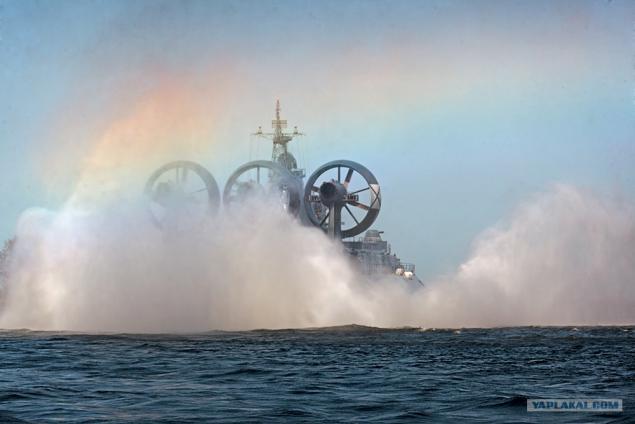
Terrain clearance
Finally "Bison" is coming to the point of destination - one of the beaches of the Baltic coast. Two sailors using reticles inspect the landing site and report that everything is clean. The ship slows down and raising clouds of sand and dust that falls on the shore. "Landing!" - Commander clicks toggle switch, turning Forcing units in planting mode: blades of the upper air intakes closed, the air circulates inside the pillow, cooling the engine. "Bison" settles on the sand, lowers the bow and similar, by which one after another move down to the beach five BMP landing. Gangway removed, and then rise again on the pillow - and in the sea. This operation takes a couple of minutes.
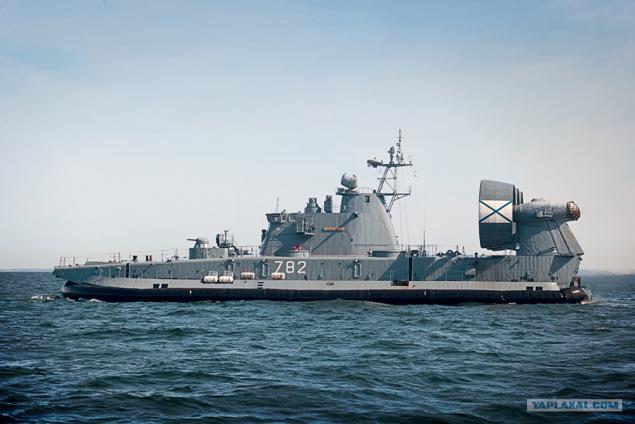
Ship to easily access to the sandy beach, almost oblivious to the border between water and solid.
Landfall comes easily, "Bison" on virtually any speed. Launching for it is much more difficult, although it is noticeable only from the inside, from the wheelhouse. Commander by agitation of the wheel left or right the ship shakes from side to side to make it easier to evict with this rough concrete nearly 500-ton colossus, his whole body trembling under the pressure of 50,000 horsepower, and "Bison" slowly, gently swaying from side on his side, slipping into the sea.
Technically, the ship can not just go to the bank, but to go by land or swamp much further. Flexible rubber enclosure consists of two parts - the receiver and mounted legkosmennye elements ("headscarf"). Thick reinforced rubber sufficiently resistant to various injuries, and small holes do not affect driveability. The ship can overcome obstacles up to 1, 6-2 m, and those less than one meter, and did not notice. In one case, the demonstration of night landing one of the export of samples destined for Greece, just "unrolled" GAZ-66, which was to highlight the place of landfall. Fortunately, no one appears injured, but the car, of course, had to be written off. Not without reason, the manufacturer claims that "Bison" is available for landings and 70% of the total length of the coastline of the seas and oceans of the world.

Source:
www.popmech.ru/weapon/17053-samyy-b...-podushke/#full
Thank you, Dmitry Mammoth for the report, Photo: Alex Axe
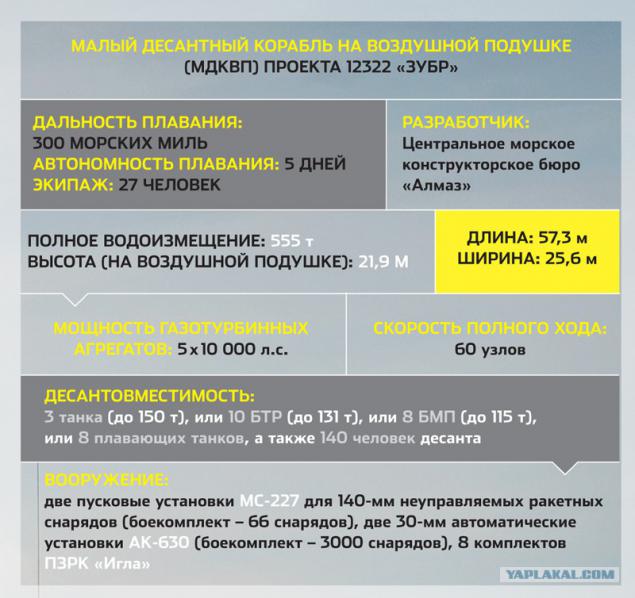
Even in the displacement mode, it looks very unusual due to the most conspicuous parts - driving screws 5-meter diameter, towering over the stern. Two towers with a quick-firing gun AK-630 as the cherry on the cake, give the ship finished and slightly menacing.

In the water coat
Huddled in a corner wheelhouse (so not to disturb anyone), I watch the preparations to sail. Posts are reporting readiness, and then, finally, gave the command to start engines, releasing a herd of 50 000 horses. In the armored pilothouse considerably muted roar of the engines, and I can only imagine how this incredible sound is perceived from the outside. At the same time, I understand that a fast ride will not work: while driving the output to the deck denied because the engine when working person can simply blow away.
"Rise!" - Commander, personally sitting at the controls, throws one of the toggle switches on the console. For each board has two of forcing the unit, the air intakes are closed top rotary blades. Flip the toggle switch turns the blades and blowers start supplying air into the pillow. Around "Mordovia" soars dust ship shaking trembling, rises above the surface. Turn the steering wheel from side to side, Sergei Konov swings heavy duty "Bison", slowly slipping on the concrete ramp into the water. When the ship is fully on the water, from the wheelhouse offers an amazing sight - around, wherever you look, sparkle plenty of rainbows - it's light is refracted at the water cloud of dust raised by an air bag. At full speed (60 knots and it is!) The ship is almost not visible - from the cloud mist protrudes only bow and glazed cabin. What, according to the officers, and still serves as a masking factor: mist interferes enemy radar signals, making it difficult to detect and target designation. Housing made of aluminum-magnesium alloy nonmagnetic, and taking into account the height of the flight (about half) "Bison" fears neither magnetic nor contact mines. The ship is equipped with five gas turbine engines - the two lower, each of which results in two injection unit (pobortno), and the top three - traction, rotate 5, 5-meter variable pitch screws in the annular orifice.

The most formidable weapon "Bison" - a two launchers for 140-mm unguided rockets.
Use such systems for fire support of landing. But in its stroke ship you will not see them. The fact that they are made drawers and put forward only to run Nursi, and after firing again fall under the deck.

The commander and the steering
Hovercraft - the only ones where the commander is not simply orders the helmsman, and the person is at the helm. Displacement vessels and ships, deep-set in the water, much more inertia and predictable. "Bison" is hovering over the water, not touching her, and reacts to the wind literally: "The main problem, difficult control hovercraft - is its windage - explains Sergey Konov. - The area of the lateral projection - more than 500 square meters, so even moderate breeze makes its corrections, not to mention the gusts that knocked the ship off course. Therefore, in the management "" Bison "more from aviation than on navigation, instant response and correction to the wind».
When the ship includes Centrifugal units and rises to the hovercraft, the air rises in a huge cloud of minute water spray, and on a clear day all around begins to sparkle with numerous rainbows.

Terrain clearance
Finally "Bison" is coming to the point of destination - one of the beaches of the Baltic coast. Two sailors using reticles inspect the landing site and report that everything is clean. The ship slows down and raising clouds of sand and dust that falls on the shore. "Landing!" - Commander clicks toggle switch, turning Forcing units in planting mode: blades of the upper air intakes closed, the air circulates inside the pillow, cooling the engine. "Bison" settles on the sand, lowers the bow and similar, by which one after another move down to the beach five BMP landing. Gangway removed, and then rise again on the pillow - and in the sea. This operation takes a couple of minutes.

Ship to easily access to the sandy beach, almost oblivious to the border between water and solid.
Landfall comes easily, "Bison" on virtually any speed. Launching for it is much more difficult, although it is noticeable only from the inside, from the wheelhouse. Commander by agitation of the wheel left or right the ship shakes from side to side to make it easier to evict with this rough concrete nearly 500-ton colossus, his whole body trembling under the pressure of 50,000 horsepower, and "Bison" slowly, gently swaying from side on his side, slipping into the sea.
Technically, the ship can not just go to the bank, but to go by land or swamp much further. Flexible rubber enclosure consists of two parts - the receiver and mounted legkosmennye elements ("headscarf"). Thick reinforced rubber sufficiently resistant to various injuries, and small holes do not affect driveability. The ship can overcome obstacles up to 1, 6-2 m, and those less than one meter, and did not notice. In one case, the demonstration of night landing one of the export of samples destined for Greece, just "unrolled" GAZ-66, which was to highlight the place of landfall. Fortunately, no one appears injured, but the car, of course, had to be written off. Not without reason, the manufacturer claims that "Bison" is available for landings and 70% of the total length of the coastline of the seas and oceans of the world.

Source:
www.popmech.ru/weapon/17053-samyy-b...-podushke/#full
Thank you, Dmitry Mammoth for the report, Photo: Alex Axe

